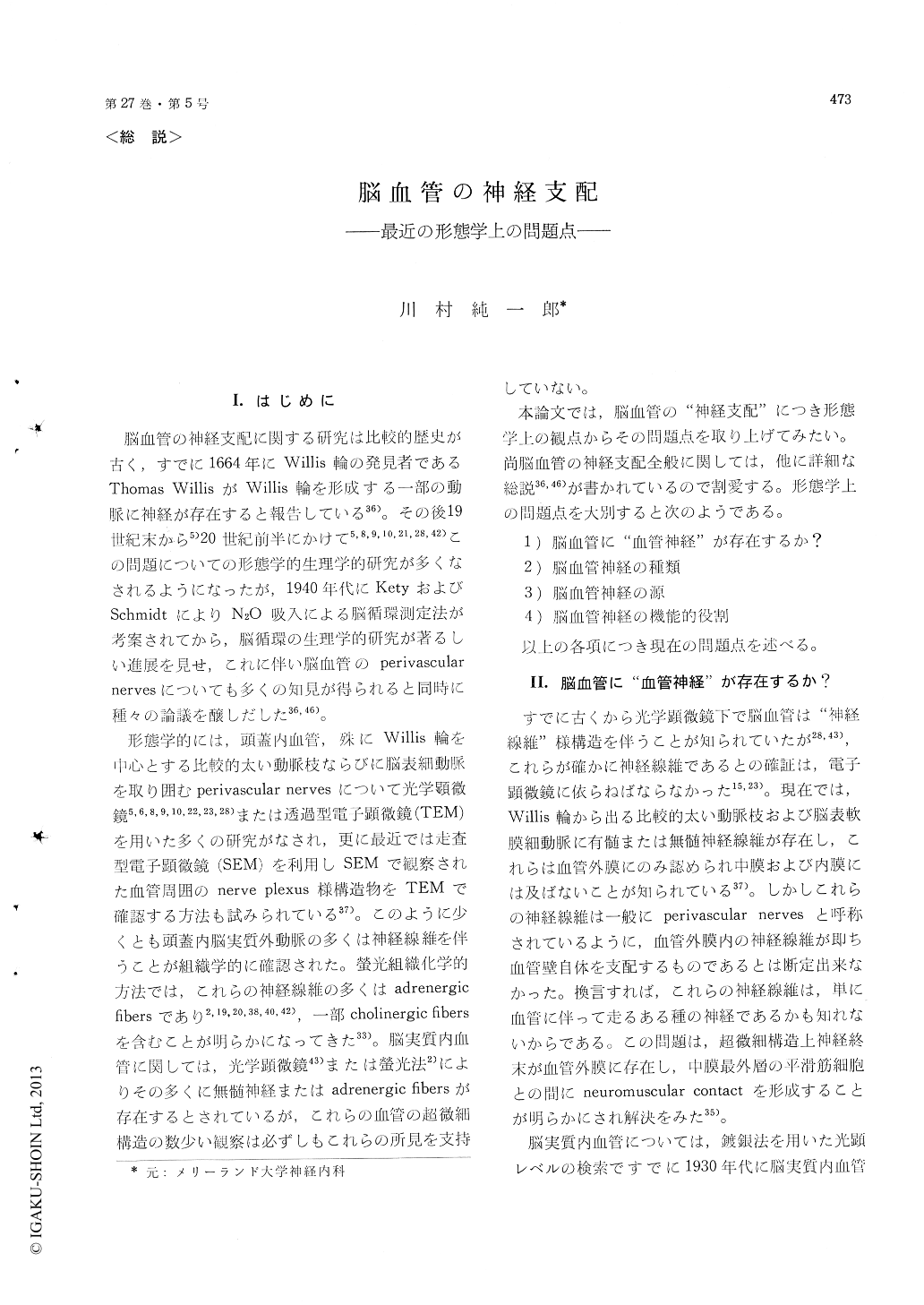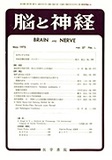Japanese
English
- 有料閲覧
- Abstract 文献概要
- 1ページ目 Look Inside
I.はじめに
脳血管の神経支配に関する研究は比較的歴史が古く,すでに1664年にWillis輪の発見者であるThomas WillisがWillis輪を形成する一部の動脈に神経が存在すると報告している36)。その後19世紀末から5)20世紀前半にかけて5,8,9,10,21,28,42)この問題についての形態学的生理学的研究が多くなされるようになったが,1940年代にKetyおよびSchmidtによりN2O吸入による脳循環測定法が考案されてから,脳循環の生理学的研究が著るしい進展を見せ,これに伴い脳血管のperivascularnervesについても多くの知見が得られると同時に種々の論議を醸しだした36,46)。
形態学的には,頭蓋内血管,殊にWillis輪を中心とする比較的太い動脈枝ならびに脳表細動脈を取り囲むperivascular nervesについて光学顕微鏡5,6,8,9,10,22,23,28)または透過型電子顕微鏡(TEM)を用いた多くの研究がなされ,更に最近では走査型電子顕微鏡(SEM)を利用しSEMで観察された血管周囲のnerve plexus様構造物をTEMで確認する方法も試みられている37)。このように少くとも頭蓋内脳実質外動脈の多くは神経線維を伴うことが組織学的に確認された。螢光組織化学的方法では,これらの神経線維の多くはadrenergicfibersであり2,19,20,38,40,42),一部cholinergic fibersを含むことが明らかになってきた33)。脳実質内血管に関しては,光学顕微鏡43)または螢光法2)によりその多くに無髄神経またはadrenergic fibersが存在するとされているが,これらの血管の超微細構造の数少い観察は必ずしもこれらの所見を支持していない。
The following subjects are reviewed in this paperwith a special attention to the ultrastructuralstudies:
1) Are intracranial arteries innervated?
2) The nature of the vascular nerves of intra-cranial blood vessels.
3) The origin of those nerve fibers.
4) Their functional significance.
Ultrastructural studies show both myelinated andunmyelinated nerve fivers along the intracranialarteries in their extracerebral courses. A "true"innervation of those arteries is supported by theevidence of nerve terminals containing granular(adrenergic) and/or agranular (cholinergic) synapticvesicles and neuromuscular contacts in the vascularadventitia. There are however only a few finestructural studies on the innervation of intracerebralblood vessels, of which some show unmyelinated aswell as myelinated nerve fibers along some of theintraparenchymal vasculatures.
Fluorescence histochemical techniques allow thedemonstration of both adrenergic and cholinergicnerve fibers along intracranial arteries. A recentstudy reveals central (non-sympathetic) adrenergicfibers on microvasculatures in the brain parenchyma,which appear originating from the locus ceruleusand are considered to regulate intracerebral micro-circulation. The latter finding should require furtherstudies by electron microscopy.
The functional significance of the vascular nervesinnervating cerebral arteries is still unknown, buton the basis of ultrastructural findings so far des-cribed they appear to play a certain role in theregulation of vascular dynamics of the brain.

Copyright © 1975, Igaku-Shoin Ltd. All rights reserved.


